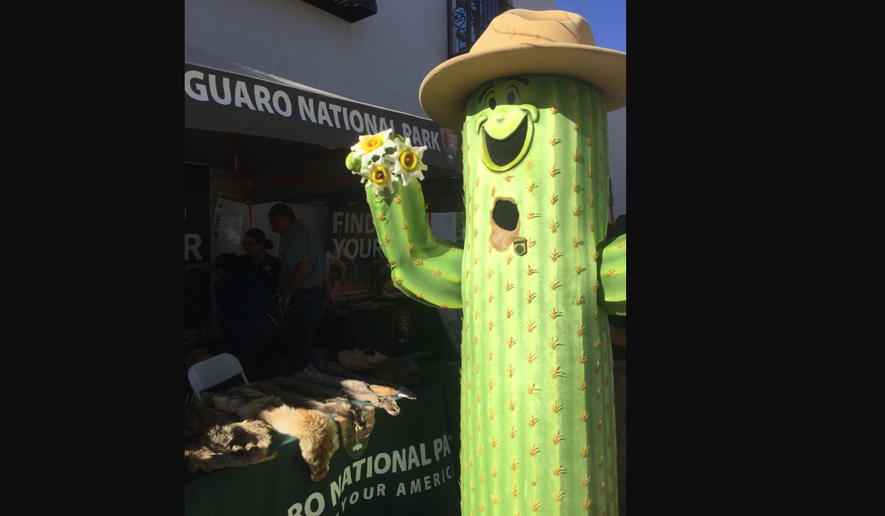The federal government loves its costumes — and not just at Halloween.
There’s Sunny Saguaro, a National Park Service cactus costume character who travels to parades and festivals. And Brite the Light Bulb, a U.S. Navy energy efficiency apostle. And the Green Reaper, an Energy Department mascot who even with a fear-mongering name and a rather scary visage is deployed to schools to encourage energy conservation.
And it all comes at a cost — more than $250,000 spent in recent years with one Ohio-based costume company, according to Sen. Joni Ernst, an Iowa Republican who says it’s time to undress the government’s lavish spending.
Her target this time is the $1.4 billion the government spends each year on advertising and public relations campaigns — twice the amount dedicated to breast cancer research, for example.
“As an Iowa State Cyclone fan, I’ll be the first to say that mascots can be fun. But there is no justification for spending a quarter of a million dollars in taxpayer money on mascots and millions more on swag,” the senator said. “These costs come at the expense of real national priorities.”
Other things taxpayers have shelled out for, in the name of Uncle Sam’s self promotion, are coloring books ($605,000), key chains ($60,000) and drink koozies ($17,000). Another $25,000 went to buy give-away stress balls, and $16,000 for fidget spinners — 2017’s ridiculous summertime craze.
Ms. Ernst’s bill, the Stop Wasteful Advertising by the Government Act — or SWAG Act — would ban the use of taxpayers’ money on creating or using a mascot for self-promotion.
Military mascots would be exempt, which is probably a relief to Bill the Goat, the U.S. Naval Academy’s man in a costume.
The SWAG act would also ban distribution of swaggy giveaways, right down to stickers, stuffed animals and writing pens.
Public relations waste is by no means a new phenomenon, according to Ms. Ernst, whose office compiled a greatest hits list of questionable spending.
In one notorious incident flagged by an inspector general, the State Department during the Obama years shelled out $630,000 to pay for “ghost” followers on Facebook.
The audit found that while some of the followers may have clicked on an ad or “liked” a department post, they had “no real interest in the topic and have never engaged further.”
Ms. Ernst — who won election five years ago with a famous ad recounting her youth castrating pigs on an Iowa farm, and her vow to bring those skills to Washington to make bureaucrats squeal — said not all PR spending is bad.
Not only does the military need to promote itself for recruitment, but public health campaigns can warn of potential epidemics or safety risks.
It’s the spending that appears to have little obvious value to the taxpayer, like a $30,000 NASA Martian-themed party, that irks her.
That NASA party featured a sci-fi costume contest.
It’s doubtful the Agriculture Department’s Sammy Soil — a government mascot for the last 40 years — would have been able to compete.
Same goes for Franklin, Housing and Urban Development’s Fair Housing Fox — though his dance moves have garnered a few dozen views on YouTube.
• Stephen Dinan can be reached at sdinan@washingtontimes.com.




Please read our comment policy before commenting.